Oral rehydration therapy (ORT) is simply the administration of basic nutrients and water, given by mouth. Various formulations of broths and salt-and-sugar solutions have been used for centuries in medicine. Chicken soup was first recommended as a nourishment for sick patients in the writings of the physician Moses Maimonides in the late 12th century (Rosner, 1971). However, as medicine became more sophisticated, such simple remedies were replaced by more technical solutions. Intravenous (IV) fluid therapy became the mainstay of fluid support, and advanced therapies such as total parenteral nutrition were developed to provide nutrition intravenously.
However, need overwhelmed the availability of IV fluids in the aftermath of war between India and Pakistan in 1971. Thousands of refugee children were dying of diarrhoea because hospitalization facilities were simply not available for them. In desperation, health professionals developed a simple recipe for an oral rehydration liquid consisting mostly of sodium chloride, glucose and sodium citrate. Family members were taught how to give the solution to their children, simply by using a spoon to give the solution frequently and in small amounts (Figure 1). This strategy reduced infant mortality in the refugee camps from 40% to 3% (Mahalanabis et al, 1973). The World Health Organization subsequently adopted the low technology solution and ‘WHO juice’ gained worldwide recognition in the 1990s. WHO estimates that ORT currently has reduced the mortality from diarrhoeal diseases by two-thirds, saving approximately 3 million children’s lives per year (Victora et al, 2000).
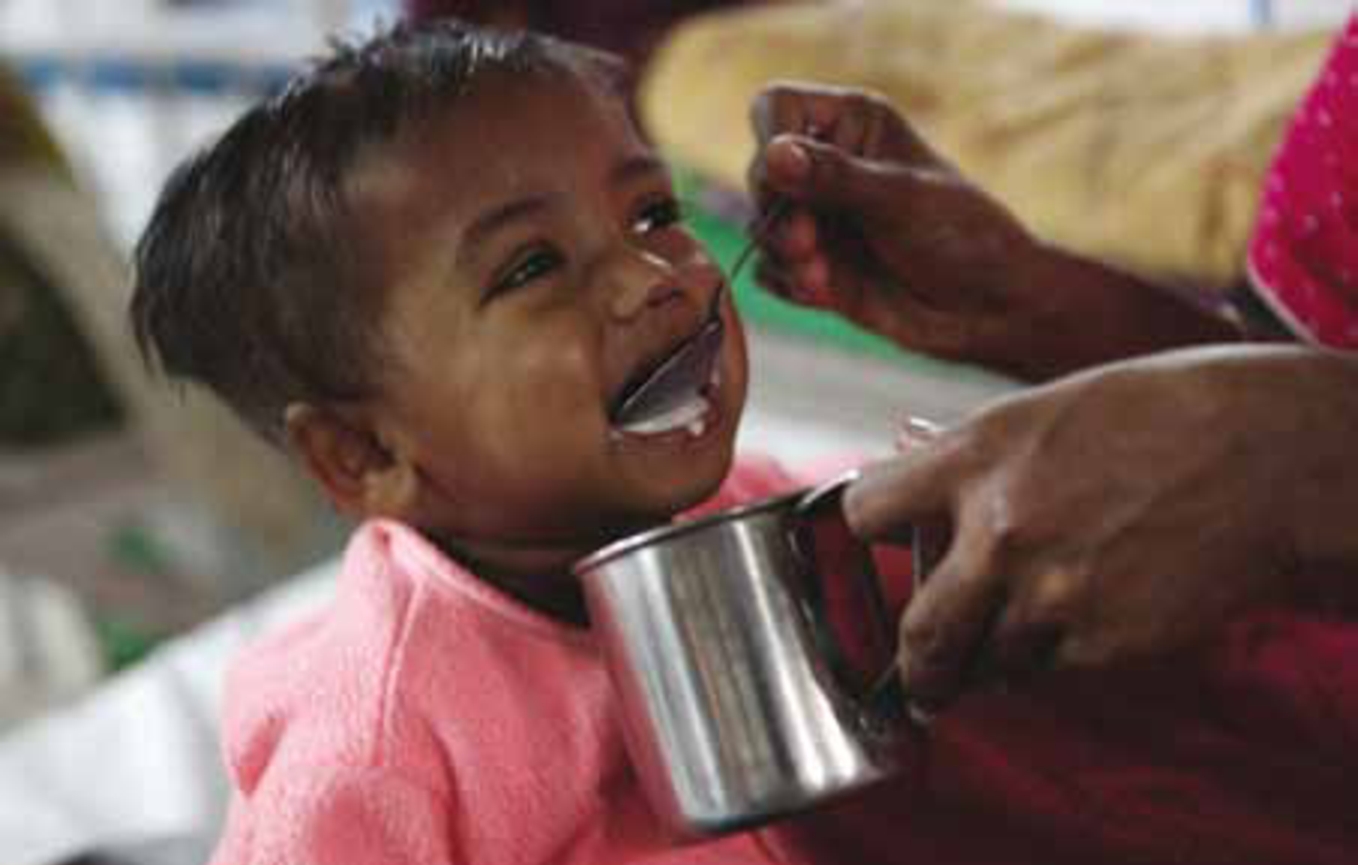
Principles
The principles of ORT are based on supplying simple nutrients that can be absorbed directly by the cells lining the small intestine, known as enterocytes (Figure 2). Enterocytes are not capable of absorbing anything larger than chains of four amino acids, and preferably single amino acids. These individual amino acids are transported into the blood stream and circulated to the rest of the body, where they are re-assembled into proteins that the body needs (Figure 3). Similarly, only single sugar molecules such as glucose, fructose and galactose can be absorbed into the enterocyte and enter the blood stream, to be used for energy by the body’s cells (Figure 3). The transport of amino acids and sugar molecules into the enterocyte is dependent on ‘gateways’ that are built into the enterocyte’s cell wall. These gateways are dependent on having a certain concentration of sodium available to them in order to accomplish their task. Digestion of fats relies heavily on the pancreas to secrete the enzyme lipase, which breaks fats down into glycerol and fatty acids. Because these physiologic processes cannot be changed, ORT solutions generally contain very simple sugars (usually glucose), along with single amino acids or else chains of only two or three amino acids. Most ORT solutions contain little or no fat, which minimizes any pancreatic activity. ORT solutions are also usually isotonic, with an osmolarity of about 300 mOsm/l. This ensures that ORT solutions are readily absorbed without creating further sodium or water loss.
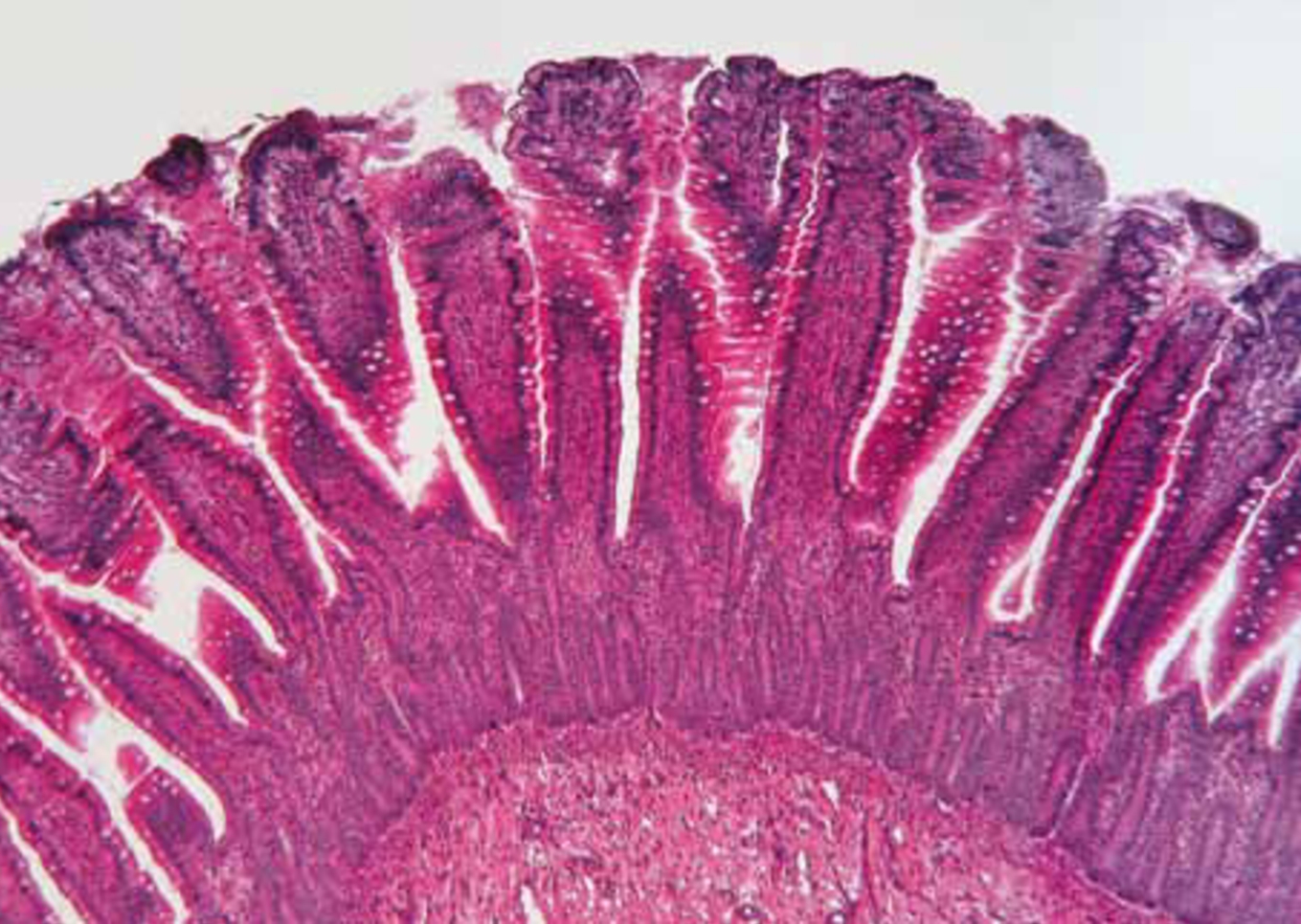
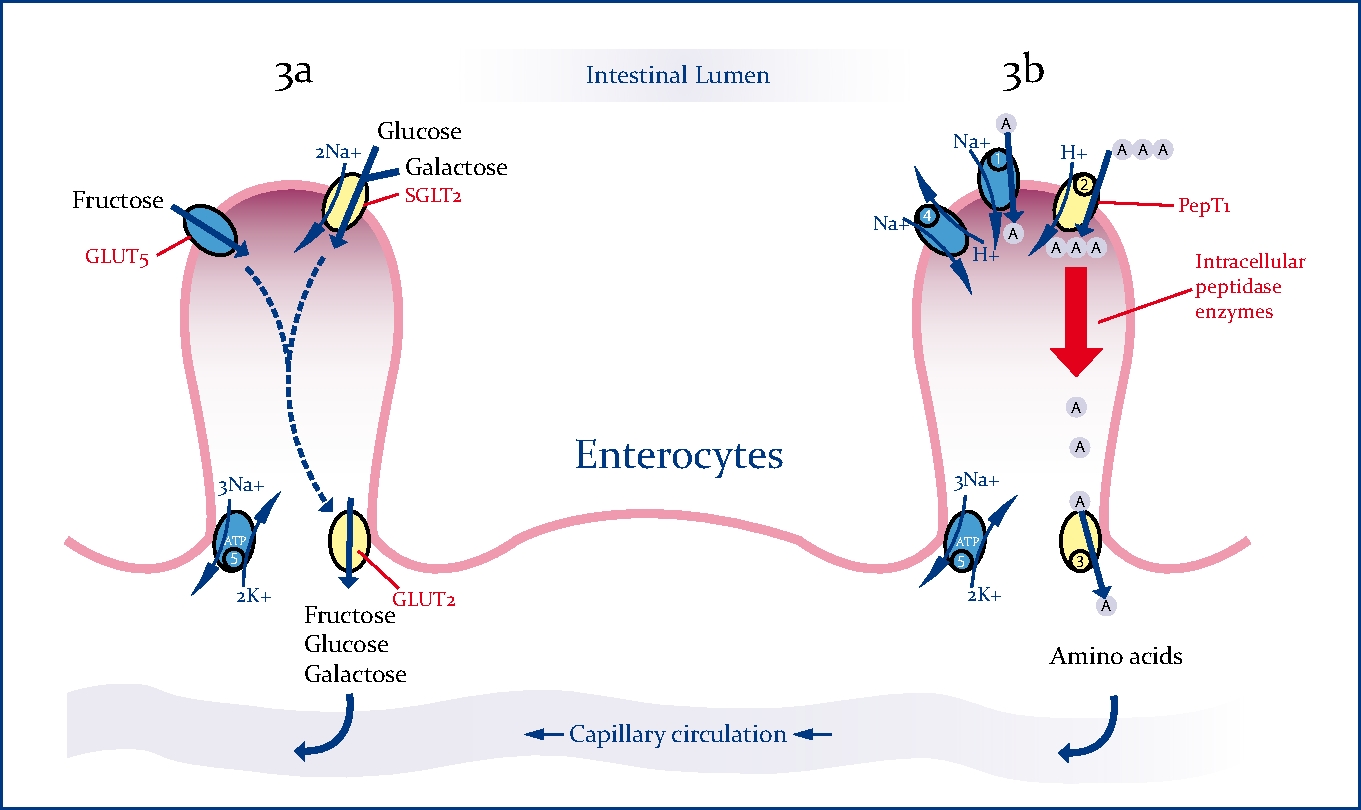
Veterinary ORT products
Following the trends of human medicine, veterinary medicine soon saw the development of ORT products for use in both large and small animals. Virtually every major pet food company now has an ORT product available. Most come in powdered chemical form and may contain anti-caking agents which decrease palatability. These formulations need to be mixed by owners or veterinary staff and care must be taken to mix them correctly. Ideally, these formulations should be reconstituted with boiled water rather than tap water, which may contain chlorine or other impurities. Many veterinary ORT products contain sodium citrate or citric acid, since this was part of the original WHO recipe, but dogs and cats do not find citric acid particularly palatable.
Oralade – a new veterinary product with traditional origins
Recently, a novel ORT product Oralade®, JAM Pet Foods has entered the veterinary market. Oralade is based on natural biologic origin chicken liver. The rationale for this formulation is that chicken liver contains generous amounts all of the of the essential amino acids for dogs and cats which are arginine, histidine, isoleucine, leucine, lysine, methionine, phenylalanine, threonine, tryptophan, and valine (Anonymous, 2006). Chicken liver is particularly high in the conditionally essential amino acid glutamate, which is the fuel source preferred by enterocytes (Furst et al, 1997). Interestingly, a scientific study of ‘Grandma’s chicken soup’ showed that it did inhibit neutrophil activity and is beneficial in combating inflammatory processes (Rennard et al, 2000).
Modern manufacturing methods
Although Oralade contains biological-origin ingredients, it is manufactured according to food manufacturing standards (Hazard Analysis And Control Point (HAACP)) methodology and meets applicable European Union regulations. Sterility is achieved by pasteurization. Oralade is currently sold as a ready-to-use liquid which avoids any issues with mixing or water impurities.
Palatability of Oralade has also been shown to be high, both in clinical usage and manufacturer’s feeding trials. In a 2-day palatability trial using 30 dogs, 96% of the dogs preferred Oralade as their first choice compared with a reconstituted powdered product. The average volume of Oralade consumed by each dog was 812 mls, compared with 84 mls for the powdered product (Mackle, unpublished data).
When should ORT be used?
All sick patients should be assessed for evidence of dehydration and hypovolaemia. Measurement of packed cell volume, total protein, and urea are essential. If the patient has been anorexic, then blood glucose should also be assessed. Patients who have been vomiting often have abnormalities in their electrolyte and acid–base balance, which can be identified by measuring sodium, potassium, chloride and bicarbonate. See Table 1 for normal values. Relative tachycardia, weak pulses, and delayed capillary refill time are all signs of hypovolaemia and indicate a need for immediate IV fluid therapy.
The use of IV fluids does not preclude the use of ORT, however. ORT can and should be used to provide baseline enteral nutrition for any sick patient on the first day of their admission to hospital. In a landmark study, 72 dogs and 60 cats admitted to the Internal Medicine Service of the Royal (Dick) School for Veterinary Studies were assessed for their nutritional status. It was found that 45% of dogs and 56% of cats had recent weight loss due to decreased food intake. This weight loss was also significantly correlated to a body condition score of less than 5, using a 1–9 scale (Chandler and Gunn-Moore, 2004). Veterinary staff should therefore be conscious of the fact that sick patients are likely not to have eaten for some days before presentation to the clinic. However, trying to provide early enteral nutrition with solid food is often unrewarding, because the patient is still inappetent, and in some cases, nauseous. A product such as Oralade may be used to make the transition from zero oral intake to resumption of solid food. Oralade can also be used to dilute semi-solid critical care foods, such as Hills a/d® or Royal Canin Recovery Diet®.
ORT in gastrointestinal disease
While it might seem counter-intuitive to administer enteral products to patients who have gastroenteritis, this is exactly what was proven to work in human medicine, as mentioned above. Gastroenteritis has many aetiologies in dogs. Most are viral, though some patients develop gastroenteritis for unknown reasons. Dietary indiscretion is also reasonably common. Parvovirus is a particularly severe form of gastroenteritis. Cells lining the intestinal tract are directly attacked by parvovirus, causing inflammation, subnormal absorption of nutrients, and haemorrhage. Parvovirus also causes a particularly severe nausea and secretory diarrhoea. Many veterinary staff are reluctant to feed patients who are vomiting, especially those with parvovirus. However, in a well designed study of 30 parvovirus puppies less than 24 weeks old, Mohr et al showed a more rapid return of appetite, more rapid weight gain and better intestinal wall integrity in puppies who received early enteral nutrition by naso-oesophageal tube compared with those who were fed a low-fat tinned food (Mohr et al, 2003).
Pancreatitis is another common problem in dogs, and is also becoming more frequently recognized in cats. Classically, the recommendation for both humans and dogs was to ‘rest the pancreas’ and provide no enteral nutrition. If nutrition was provided, it was given intravenously. However, based on many studies, the consensus approach in humans now is to begin feeding as early as possible, rather than relying on IV nutrition (Johnson, 2005). This approach is supported by the results of a large retrospective study of 127 dogs and cats, in which some patients received only IV nutrition, while some patients received enteral nutrition in addition to their IV feeding. Patients who received only IV nutrition were significantly less likely to survive (68%) than those who also received enteral nutrition in addition to their IV nutrition (89%) (Chan et al, 2002).
A third type of gastrointestinal problem that is common in small animal patients is the postoperative recuperation after gastrointestinal surgery. Again, historically, recommendations were to not feed the patient for at least 24 hours after surgery and sometimes longer. Patients who have recently undergone intestinal surgery are at particular risk of intestinal motility disorders, particularly ileus. However, the presence of food within the intestine actually promotes normal motility and stimulates mucosal perfusion, which speeds healing (Chan, 2007). Current recommendations in humans are to begin feeding in less than 24 hours after gastrointestinal surgery (Lewis et al, 2001; Silk and Gow, 2001).
Case study‘Jazz’ was a 5-year-old male crossbreed weighing 23 kg (Photo 1).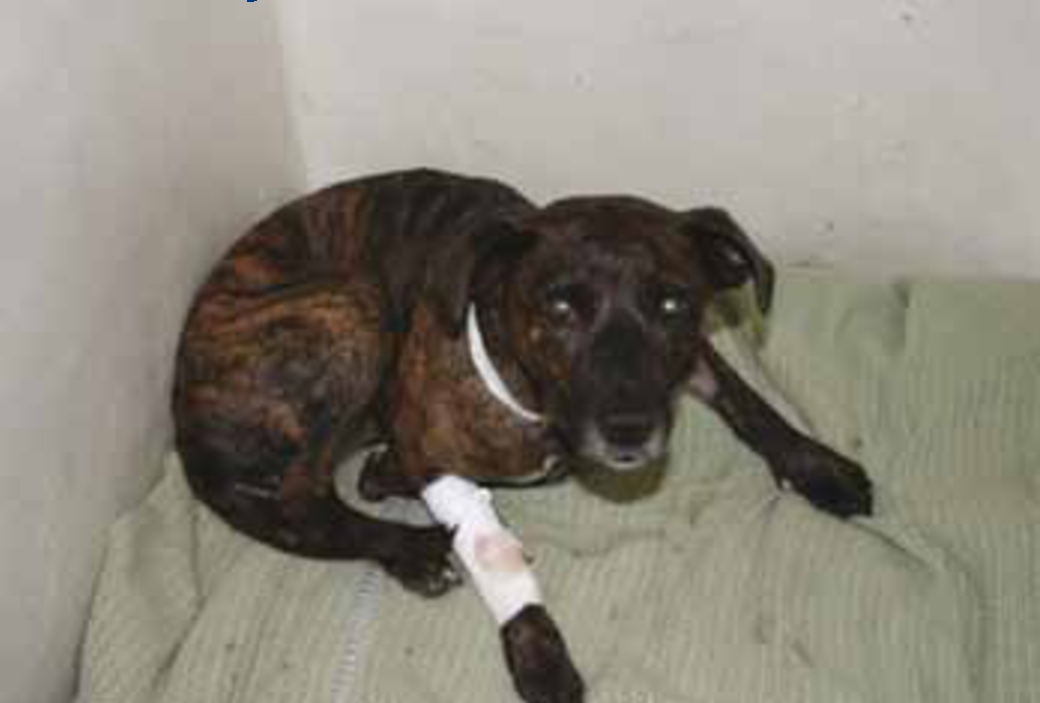
Photo 1. Jazz, a 5-year-old male crossbreed.
The owners reported that he had been off colour for 1 week, and completely anorexic for the last 2 days. There was no history of vomiting or diarrhoea. Physical examination at the time of admission revealed pale pink mucous membranes with a capillary refill time of 3 seconds (Photo 2).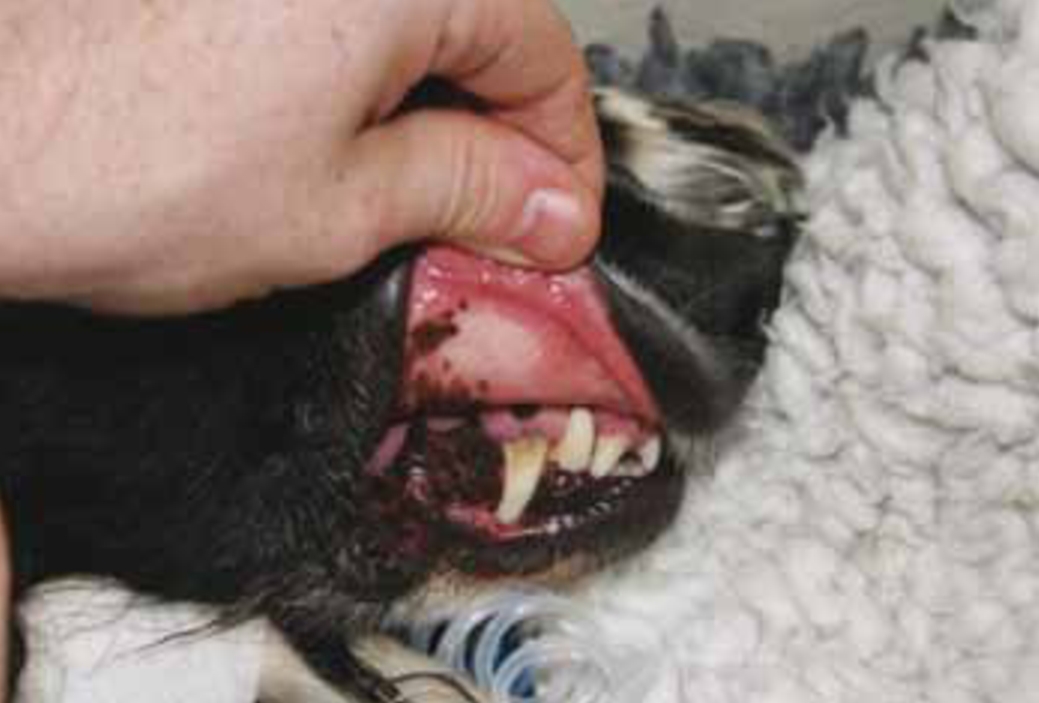
Photo 2. Examination revelaed pink mucous membranes
Heart rate was 140/minute. Respiratory rate was 48/minute. Temperature was 38.6oC. Skin tenting was delayed. Mentation was depressed.Jazz was assessed as 12% dehydrated and started on intravenous (IV) fluids using Hartmann’s at a rate of 276 ml/hour (230 ml/hour to replace a dehydration deficit of 2760 mls in 12 hours plus 46 ml/ hour maintenance). A minimum database consisting of packed cell volume, total protein, urea and glucose would normally have been done when the IV catheter was placed, but this was unintentionally overlooked.Two hours later, Jazz was re-examined and noted to have dried sticky urine on his abdominal hair. Sticky urine caused suspicion of glucosuria. At that time, a minimum database was done and Jazz’s glucose was 35 mmol/l. Both packed cell volume (55%) and total protein (78 g/l) were high (refer to Table 1 for normal values). A urine sample was positive for glucose and ketones thus leading to a diagnosis of diabetic ketoacidosis. Insulin therapy was started.
Table 1. Normal values of selected biochemistry tests (Jacobs et al, 2000)
| Parameter | Dog | Cat |
|---|---|---|
| Packed cell volume (%) | 35–52 | 27–48 |
| Total protein (g/l) | 57–76 | 53–85 |
| Urea (mmol/l) | 3.1–10.9 | 4.8–11.6 |
| Glucose (mmol/l) | 3.5–6.1 | 2.6–8.4 |
| Sodium (mmol/l) | 143–168 | 147–161 |
| Potassium (mmol/l) | 4.1–5.4 | 4.3–6.1 |
| Chloride (mmol/l) | 108–131 | 115–125 |
| Bicarbonate (mmol/l) (venous) | 22.3 ± 0.43 | 19.4 ± 4 |
Ideally Jazz’ electrolytes would have been measured, but these were not available in house. Diabetic dogs are at risk of hypokalaemia due to the diuresis that accompanies diabetes mellitus. Therefore Jazz was offered a bowl of reconstituted electrolyte powder mix, but refused to drink it. He was then offered Oralade and continued to drink it thirstily throughout the next day. The Oralade provided a good, safe source of sodium, potassium and chloride. Jazz went on to make a full recovery and is now on routine insulin therapy for his diabetes.Case study outcomeThis case illustrates how even a thirsty dog will avoid some classic rehydration products due to poor palatability. Oralade provided a safe, palatable source of both fluid and electrolytes.
Administering ORT
In the authors’ hospitals, ORT fluid is initially given at a rate of 0.5 ml/kg every 2 hours, orally, using a syringe if necessary. This is a very small volume which rarely precipitates vomiting. If no vomiting occurs, this volume is increased by 50% every 8–12 hours. For cats and small dogs, ice cube trays can be used to freeze small blocks of ORT solution and then dispensed as needed (Figure 4). Once the patient begins to lap the fluid, then volumes can be increased rapidly and more calorie-dense food can be introduced.
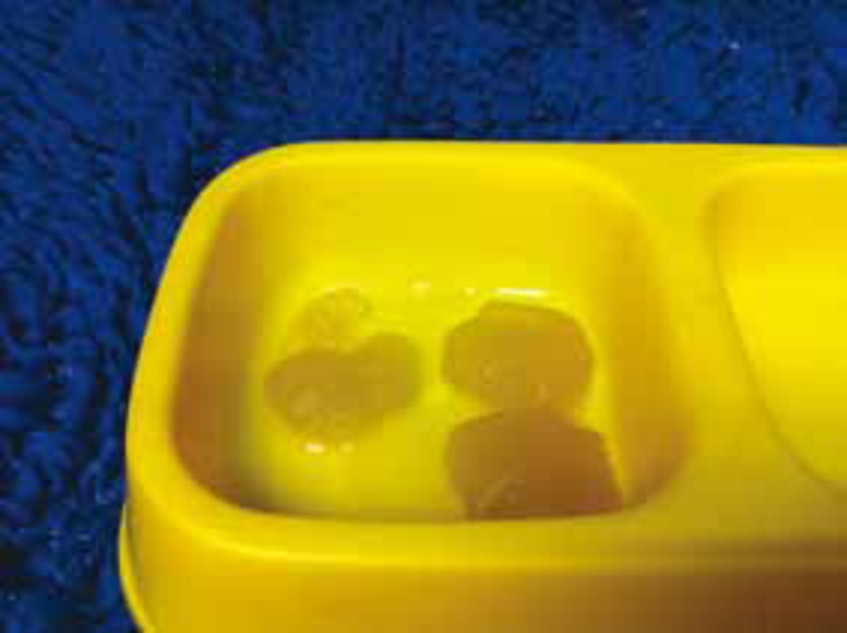
ORT also has a place in outpatient treatment of gastrointestinal conditions. ORT, particularly if it is a highly palatable product such as Oralade (Figure 5), can be used as part of a dietary management plan for patients with mild gastroenteritis. In many of these patients, a short period of fasting combined with small amounts of fluid intake is sufficient to relieve the symptoms.
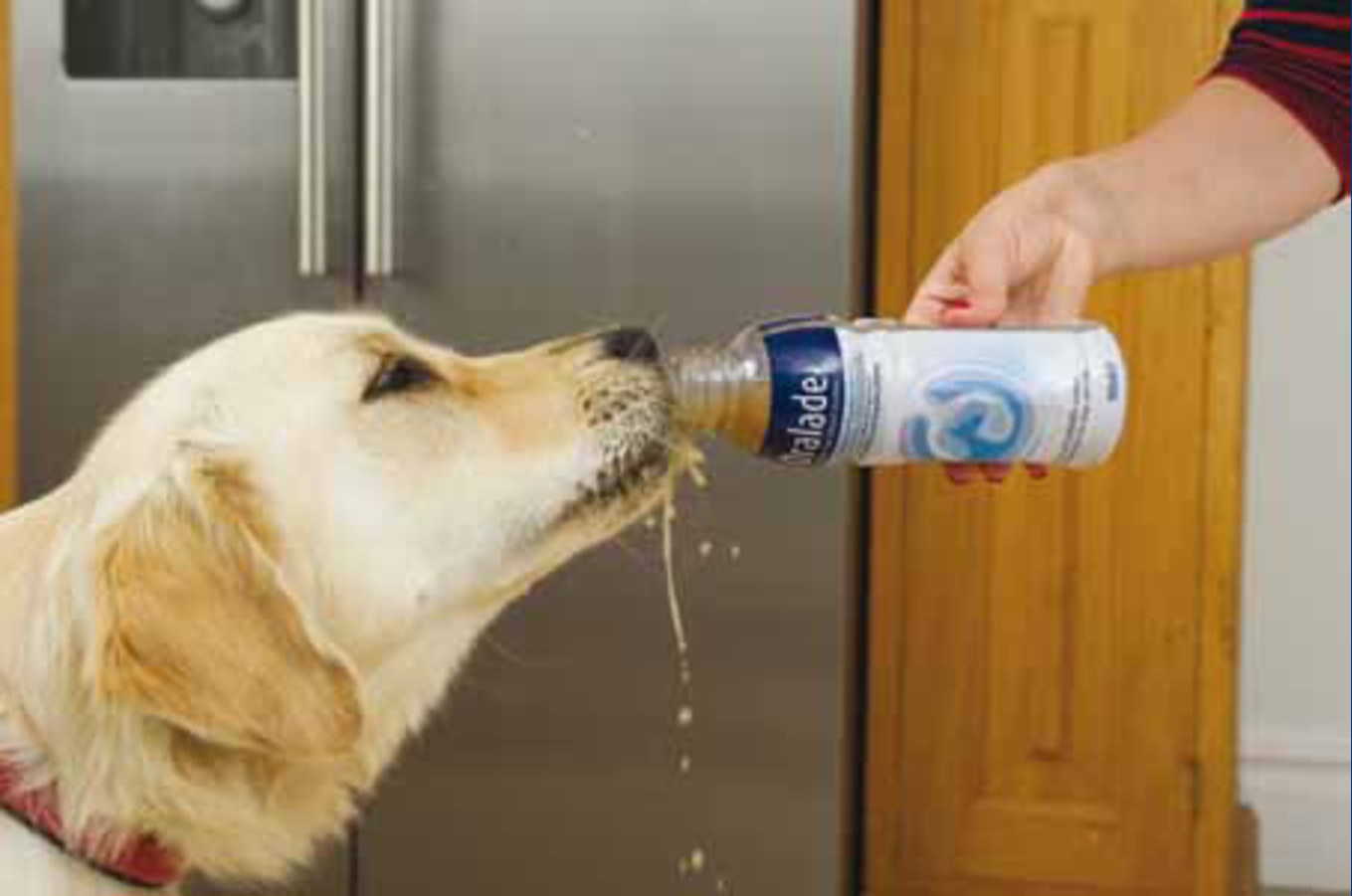
Owners and lay staff can easily be taught how to administer ORT, as no special skill is required.
Other uses of ORT
Human athletes have had the benefit of commercially available ORT products such as Gatorade® since 1965, when University of Florida physicians developed the product to prevent student athletes from succumbing to heat exhaustion while practicing. Canine athletes such as agility and working dogs are also susceptible to dehydration and electrolyte loss. It is likely that they would benefit from an ORT product.
Conclusion
ORT has a vital place in the management of veterinary patients. These rehydration products should be used as a day-1 strategy in any anorexic or vomiting animal and can be used alongside IV fluids. ORT should be continued until a transition to more complex foods can be made. ORT allows the body to gain essential nutrients and electrolytes without burdening digestive processes. Products which are highly palatable to veterinary patients are likely to be well tolerated.
Key Points
- Oral rehydration therapy (ORT) has been shown to be a valuable therapy in the treatment of human gastroenteritis, and shows promise in veterinary medicine.
- Carbohydrates and proteins can only be absorbed through the cells lining the small intestine, known as enterocytes, in the form of simple sugars and verysmall chains of amino acids. ORT provides these simple sugars and amino acids.
- ORT products at low volumes can be used as a day-1 supportive strategy in any anorexic or vomiting animal.
- Early enteral nutrition has been shown to improve survival in veterinary patients suffering from a variety of serious illnesses, including parvovirus and gastrointestinal surgery.
- Approximately half of the dogs and cats admitted to a referral veterinary hospital had significant weight loss due to the anorexia associated with their illness. Veterinary staff should be aware of the true duration of anorexia in hospitalized patients.
- ORT can be used alongside intravenous fluid therapy, thus helping to maintain the integrity of the intestinal mucosa

